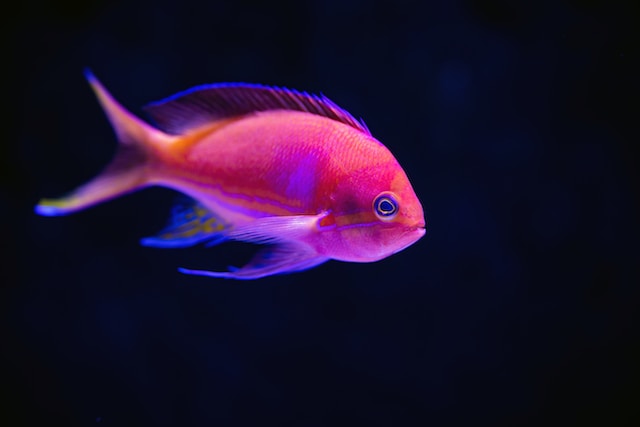Chinese restaurants have a unique ambiance, complete with traditional decorations, soothing lighting, and sometimes, fish tanks. These fish tanks are often considered an essential aspect of the overall décor in a Chinese restaurant. Many people are intrigued by the presence of a fish tank in a restaurant, which prompts the question: why do Chinese restaurants have fish tanks? In this article, we will explore some possible reasons behind this tradition.
Symbolism and Significance
Chinese culture places a great emphasis on symbolism and the fish, in particular, holds great significance. In Chinese culture, the fish is a symbol of abundance, prosperity, and good luck. For this reason, it is common to see fish tanks in Chinese restaurants. The fish is believed to bring good fortune and attract positive energy into the restaurant, which can ultimately lead to the success of the establishment.
In addition to this, the fish tank also represents the importance of fresh ingredients in Chinese cuisine. Since fish is a staple food in many Chinese dishes, the presence of a fish tank shows that the restaurant takes the freshness and quality of their seafood seriously. Customers can see the fish swimming in the tank and are therefore reassured that they are receiving fresh and high-quality seafood in their meals.
Furthermore, fish tanks are also seen as a way of creating a calming and peaceful atmosphere within the restaurant. The sound of water and the sight of fish swimming can have a calming effect on people, making them feel more relaxed and at ease. This can lead to a more enjoyable dining experience for customers, and they may be more likely to return to the restaurant in the future.
Overall, the presence of fish tanks in Chinese restaurants serves multiple purposes, from the symbolic to the practical. By incorporating this element into their decor, Chinese restaurants can create a unique and inviting atmosphere that sets them apart from other types of restaurants.
Feng Shui
Feng shui is an ancient Chinese practice that is believed to harmonize people with their environment. It is based on the idea that the placement of objects can affect the flow of energy, or “chi,” in a space.
- Attracting Good Luck and Prosperity
Fish are a symbol of good luck and prosperity in Chinese culture. In feng shui, the presence of live fish is believed to bring positive energy to a space and attract wealth and abundance. The movement of the fish is thought to stimulate the flow of chi, creating a positive atmosphere.
- Balancing the Five Elements
According to feng shui principles, the five elements of water, wood, fire, earth, and metal should be in balance in a space. The presence of live fish is said to represent the water element, which is associated with abundance and prosperity.
- Neutralizing Negative Energy
In feng shui, fish tanks are also believed to neutralize negative energy. The movement of the fish and the sound of the water are said to create a calming effect, which can help to reduce stress and anxiety.
- Enhancing the Aesthetic Appeal
Fish tanks can also enhance the aesthetic appeal of a space, adding a touch of beauty and tranquility. They can be used as a decorative element and can create a peaceful atmosphere in a restaurant.
- Creating a Relaxing Atmosphere
The sound of flowing water and the movement of the fish can create a calming effect on diners, making the restaurant experience more enjoyable. Fish tanks can also be a source of entertainment for children and can help to create a family-friendly atmosphere.
Overall, the presence of fish tanks in Chinese restaurants is believed to bring positive energy, attract good luck and prosperity, balance the elements, neutralize negative energy, enhance the aesthetic appeal, and create a relaxing atmosphere.
Menu Options
Fish tanks in Chinese restaurants aren’t just for show. They also serve a functional purpose. Many Chinese restaurants offer fresh seafood on their menus, and keeping live fish on hand ensures the freshness and quality of the seafood dishes they serve.
Having a fish tank in the restaurant allows customers to select the specific fish they want to eat, ensuring that it is fresh and of high quality. Customers can be assured that the fish they order is truly fresh, as they can see it swimming around in the tank before it is cooked.
Moreover, some restaurants allow customers to bring in their own live seafood and have it prepared for them. In this case, the fish tank provides a holding area for the live seafood until it is cooked.
The presence of live fish in the restaurant also adds to the dining experience. Customers can enjoy the calming effect of watching the fish swim around in the tank while they wait for their food to arrive. It creates a pleasant and relaxing atmosphere that enhances the overall dining experience.
Additionally, some Chinese restaurants offer exotic seafood dishes that are not commonly found in other types of restaurants. Having a fish tank allows them to offer a wider variety of seafood options that are not available in frozen or pre-packaged form. Customers can enjoy the unique taste and freshness of these exotic seafood dishes, which can only be achieved through the use of live seafood.
In conclusion, the fish tanks in Chinese restaurants serve both practical and aesthetic purposes. They ensure the freshness and quality of the seafood dishes, add to the dining experience, and allow for the offering of exotic seafood options.
Entertainment Value
In addition to their symbolic and cultural significance, fish tanks in Chinese restaurants also serve an entertainment value. Watching the colorful fish swimming around can be calming and relaxing for customers, especially if they are waiting for their food or dining alone. It can also be a conversation starter among customers or with restaurant staff, as people may ask about the types of fish or how the tank is maintained.
Moreover, some Chinese restaurants may even hold special events or promotions related to their fish tanks. For example, they may have a “fish feeding” event where customers can purchase food to feed the fish in the tank. This can add a fun and interactive element to the dining experience and make customers feel more connected to the restaurant.
Overall, fish tanks in Chinese restaurants provide an entertainment value that can enhance the dining experience and make it more enjoyable and memorable for customers.
Maintenance and Care
Maintaining a fish tank requires time and effort, but it can be rewarding in terms of customer satisfaction and aesthetic appeal. Proper care of the fish tank is necessary to ensure the health and well-being of the fish and the overall cleanliness of the restaurant.
- Water Quality
The water in the fish tank must be changed regularly to maintain good water quality. This means testing the water for pH levels, ammonia, and nitrate levels. If these levels are not within the proper range, it can affect the health of the fish and even lead to their death. Water changes should be done at least once a week, and the tank should be cleaned thoroughly once a month.
- Fish Health
The fish in the tank must be monitored for signs of illness, such as discoloration, lethargy, and abnormal behavior. Sick fish should be removed from the tank immediately and treated appropriately.
- Feeding
The fish must be fed regularly and in the appropriate amounts. Overfeeding can lead to poor water quality and health problems for the fish. Underfeeding can lead to malnourishment and stunted growth.
- Cleaning
The tank and its accessories must be cleaned regularly to prevent the buildup of algae and other debris. The tank should be scrubbed with an aquarium-safe brush, and the filter, heater, and other equipment should be checked and cleaned as needed.
- Staff Training
It is important to provide staff members with proper training on how to care for the fish tank. This includes understanding water quality, feeding, and cleaning procedures. Staff members should also be aware of the importance of maintaining a clean and healthy environment for the fish and customers alike.
By taking care of the fish tank, Chinese restaurants can provide an attractive and relaxing environment for their customers, while also promoting the well-being of the fish.
Conclusion
In conclusion, the presence of fish tanks in Chinese restaurants can serve multiple purposes beyond being a decorative element. The tanks have significant symbolic and cultural value, represent prosperity and good luck, and create a harmonious and balanced environment through the principles of feng shui. Additionally, some restaurants may offer live seafood options for customers, increasing the freshness of their dishes. However, it is important to note that the maintenance and care of these tanks is essential for the well-being of the fish and the overall cleanliness of the restaurant. Overall, the presence of fish tanks in Chinese restaurants adds to the overall dining experience, and is a unique feature that continues to be popular among customers.




